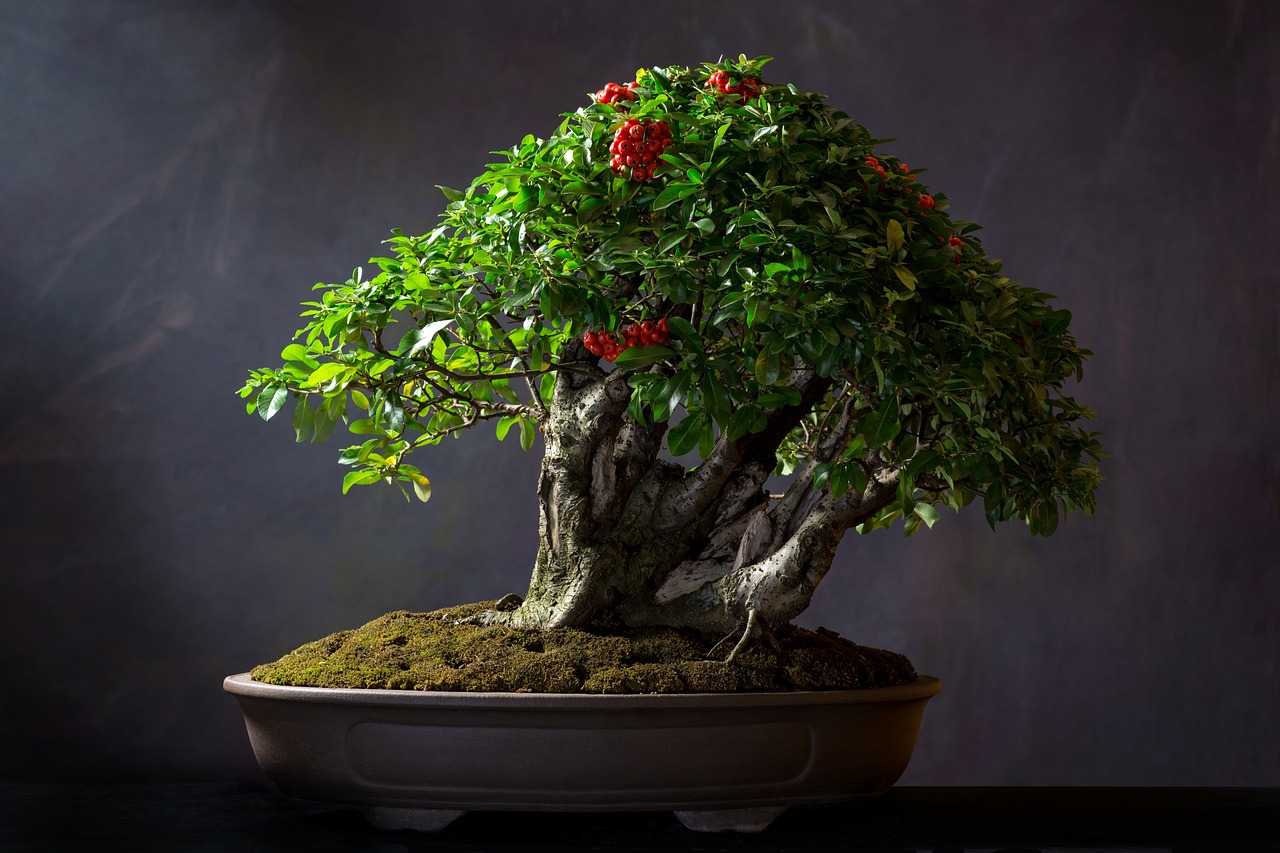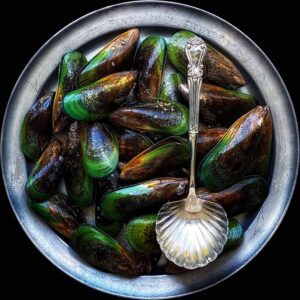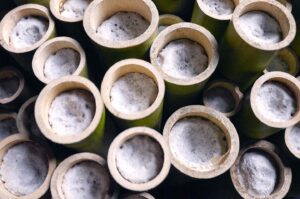 Pin
Pin Photo Courtesy of Wikimedia
Korean rice alcohol, known as makgeolli, has deep roots in ancient rural culture. It was once a staple drink among farmers and village elders during harvest festivals. Its creation wasn’t tied to luxury but survival — a humble brew made from rice, water, and naturally fermented starter called nuruk. This drink was passed from one generation to another not by recipes, but by rituals, seasons, and intuition.
The taste of traditional makgeolli is milky, slightly sweet, and fizzy. But more than its flavor, it carries a story of community. In earlier times, whole families gathered during brewing, sharing stories and dividing roles. What began as a necessity became a symbol of identity and celebration — it was poured before ancestors, and offered in respect before meals or milestones.
Understanding how Koreans make rice alcohol the traditional way helps us appreciate its cultural importance. This is more than just a beverage. It’s liquid memory — made with hands, time, and the spirit of old Korea.
Table of Contents
The Role of Nuruk in Natural Fermentation
Unlike commercial yeasts used in modern brewing, nuruk is a wild fermentation starter made by naturally cultivating bacteria, yeast, and enzymes on grains like wheat or rice. The process involves letting the mixture ferment in warm, humid conditions, allowing nature to develop the complex microbial community essential for alcohol production.
What makes nuruk unique is its ability to both break down the starches in rice and convert them into sugar and alcohol. This dual function — saccharification and fermentation — is what gives makgeolli its creamy texture and layered taste. Families often had their own style of nuruk, passed down and adjusted based on regional ingredients or seasonal humidity.
Using nuruk isn’t just a technique — it’s a philosophy of patience and balance. By trusting wild fermentation, traditional Korean brewers accept nature’s pace, not speeding the process. That’s why makgeolli is alive in both flavor and spirit — raw, unfiltered, and ever-changing.
How Nuruk Is Made in the Traditional Way
 Pin
Pin Photo Courtesy of smoothmen.tistory.com
Nuruk is not simply a fermentation starter — it is the quiet architect behind Korea’s traditional rice alcohol. Its preparation begins with grains, typically wheat or rice, that are coarsely ground after soaking. The grain is then shaped into thick slabs or discs, dense enough to hold form but porous enough to breathe. These are not just pressed for function — they are formed with intent, shaped by hands that understand the role time will play.
Once molded, the discs are placed in a warm, humid space — often on rice straw or in earthen vessels — where they remain undisturbed for nearly three weeks. During this time, wild microorganisms from the air and surrounding environment settle into the grain. Mold blooms across the surface, bringing with it the enzymes and natural yeasts essential for converting starches into sugars and sugars into alcohol.
When the discs are fully fermented, they are sun-dried and stored in breathable containers. The resulting nuruk is dry, fragrant, and alive with possibility — a catalyst of transformation that connects field to fermentation in the most elemental way.
Preparing and Steaming the Rice
The foundation of any good makgeolli is properly cooked rice. Traditionally, short-grain or glutinous rice is used because it holds moisture well and provides the right starches for fermentation. The process begins by rinsing the rice thoroughly, not just to clean it but to remove excess starch that could disrupt the balance during fermentation.
After washing, the rice is soaked for several hours. This step ensures even cooking and keeps the grains firm, not mushy. Steaming — not boiling — is the traditional method used, often done in a large bamboo or metal steamer. Steamed rice holds its structure better, allowing the nuruk to work slowly and efficiently through each grain during fermentation.
Once the rice is fully steamed, it’s left to cool naturally to room temperature. This part is crucial. Adding nuruk to hot rice can kill the microbes needed for fermentation. Patience is key — and so is respect for each stage. In many Korean homes, this cooling stage often invites a pause, tea, and conversation.
Mixing Rice, Nuruk, and Water
Once the rice has cooled, it’s time for the most intimate part of the brewing process: mixing the ingredients by hand. The steamed rice is placed into a large clay or earthenware pot, then crumbled nuruk is sprinkled evenly on top. This mixture is stirred gently, combining the grains and microbial starter until they form a loose, sticky mass.
Clean water is added slowly, enough to moisten the mixture without drowning it. The texture should feel like soft porridge — thick but not stiff. Traditionally, the mixing is done with bare hands, not just for practicality but for connection. In many rural households, it’s believed that the brewer’s mood and touch can subtly influence fermentation.
After the mixing is done, the pot is loosely covered with cloth, allowing air circulation while keeping out dust. This stage marks the beginning of fermentation, where the rice begins its transformation into a living, breathing drink. The mix is now ready to sit quietly, beginning the slow alchemy that creates makgeolli.
The First Days of Fermentation
Fermentation begins quietly but decisively once the mixture rests in its jar. In traditional homes, the pot is left in a shaded corner kept naturally at twenty-two degrees. Within twelve hours tiny bubbles rise, signaling that yeast and bacteria have woken. This first stage lasts two or three days, setting the foundation for flavor and mild natural carbonation.
Each morning and night the brewer lifts the cloth and gives the mash a gentle stir. Wooden paddles are common, though many still prefer bare hands to feel its temperature and texture. Stirring distributes heat, prevents mold from forming on the surface, and allows more oxygen to reach active microbes, keeping the fermentation steady and lively.
During this period, aromas shift daily—first steamed grain, then tangy fruit, finally a faint yogurt scent. Old brewers listen for the soft hiss of escaping gas, choosing intuition over thermometers. Patience here rewards the palate later, because rushing can leave starch unconverted and the final drink flat. Good makgeolli grows through observation, not timers.
Full Fermentation and Maturation
As the days pass, the fermentation deepens. By day five or six, the mixture bubbles more actively, and a soft layer of rice settles at the bottom while clear liquid forms above. This is a sign that sugars are being steadily converted into alcohol. The smell becomes richer, and the mash takes on a soft sourness balanced by underlying sweetness — hallmarks of properly aged makgeolli.
In traditional brewing, the fermentation is allowed to continue for up to two weeks. There’s no fixed deadline. The brewer watches and smells, trusting the signs — the calm bubbling, the shift in density, and the appearance of surface patterns. Temperature plays a quiet role, with cooler rooms extending the process and warmer days quickening it.
By the final stages, the liquid becomes more defined. The flavors have settled and deepened. The rice mash now floats more loosely, and the alcohol level reaches its gentle peak. This stage is about waiting without interfering — letting nature complete what hands have started, honoring its rhythm.
Straining the Makgeolli
Once fermentation has reached its peak and the mash has matured, it’s time to separate the drink from the solids. Traditionally, this was done with a fine woven cloth or a large cotton filter bag. The mixture is poured through the cloth and gently pressed by hand. This step requires care, as too much pressure can force rice particles into the liquid, making it too thick or grainy.
The liquid that emerges is milky and cloudy — this is fresh makgeolli. It’s collected in earthen or glazed jars, ready for immediate consumption or short-term storage. The solids left behind, called sikhe or jjigaemi, aren’t wasted. They’re often used in soups, pancakes, or as feed — nothing is thrown away in the traditional method.
This act of straining is more than mechanical. It’s a ritual of transformation. After days of patience and labor, the brewer finally sees the result — smooth, lively rice wine with a gentle aroma. It’s not only drinkable but deeply personal — a liquid shaped by hands and time.
Bottling and Storing Traditional Makgeolli
Traditional makgeolli isn’t pasteurized or preserved — it’s alive. After straining, it must be bottled carefully to preserve its texture and natural fizz. Glass jars or ceramic crocks are preferred in rural homes, though modern brewers sometimes use recycled bottles. The important part is keeping the bottle loosely capped during the first day or two, allowing carbon dioxide to escape to prevent pressure build-up.
Once bottled, makgeolli is typically stored in a cool area or, today, in the refrigerator. Cold storage slows fermentation and keeps the flavor balanced. Left at room temperature, it may become too sour or alcoholic within days. Most home brewers drink their batch within a week, enjoying its evolving taste each day.
The appearance may change — sediment settles, and fizz increases. A gentle shake before pouring is common, but never aggressive. This traditional rice wine isn’t meant to be crystal clear or overly refined. Its charm lies in its rustic, ever-changing nature. It continues to breathe in the bottle, a sign it’s still alive and made the old way.
Drinking Rituals and Cultural Traditions
In Korean tradition, makgeolli is more than a drink — it’s a shared experience. Typically poured into shallow bowls, it’s enjoyed with both hands, symbolizing respect. It’s common courtesy for one person to pour for another, never for oneself, especially among elders. These gestures reflect Korea’s deep-rooted values of hospitality and social harmony.
Makgeolli pairs beautifully with savory dishes like pajeon (scallion pancake) or kimchi jeon, especially during rainy days. There’s even a saying that rain makes makgeolli taste better — a cultural blend of mood and comfort food. In the countryside, farmers often gather after work with a bowl of makgeolli, sharing stories and laughter over simple meals.
Traditional festivals and ancestral rites also feature makgeolli. It’s placed on ritual tables, symbolizing purity and connection to the earth. The drink serves as a bridge between the living and the spirits, poured with reverence. Drinking makgeolli isn’t just about taste; it’s about time, memory, and belonging to something older than ourselves.
Health Benefits and Nutritional Value
Beyond its cultural charm, traditional makgeolli offers surprising health benefits. Since it’s unfiltered and naturally fermented, it contains lactic acid bacteria, similar to yogurt. These probiotics support digestion, improve gut health, and may even enhance immunity when consumed in moderation. It’s often referred to as “drinkable rice” due to its nutritional density.
Makgeolli also contains amino acids, fiber, and a small amount of B vitamins. Because it’s made from rice and nuruk without added sugars or preservatives, it remains closer to food than factory-made alcohol. Korean elders sometimes refer to it as “strengthening wine,” and though it’s mild in alcohol, it provides warmth and energy after hard work.
However, moderation is key. Since makgeolli continues to ferment, it can increase in alcohol content if left too long. Traditional batches are best consumed fresh — while their probiotic levels are high and sugar content low. It’s a drink that nourishes not just the body, but the heritage of those who made it with care.
Differences Between Traditional and Commercial Makgeolli
Traditional makgeolli and its commercial counterparts might look similar, but they’re worlds apart in taste, texture, and philosophy. Homemade brews are often thicker, grainier, and slightly tart, with a depth of flavor that changes day by day. This complexity comes from natural fermentation and the absence of preservatives or pasteurization.
In contrast, most store-bought makgeolli is filtered for a smoother consistency and treated to extend shelf life. It often contains sweeteners, artificial flavoring, or carbonation. While convenient, these versions lack the raw, earthy notes that define the traditional drink. For many, commercial makgeolli is an introduction, but homemade is where true appreciation begins.
Brewers and purists argue that traditional methods preserve not only flavor but heritage. They maintain that each batch carries the climate, water, and touch of the maker. In recent years, a growing interest in artisan food has led to a revival of home brewing, with younger Koreans rediscovering their grandparents’ techniques and reclaiming the craft, one cloudy bowl at a time.
The Revival of Home Brewing in Modern Korea
In today’s fast-paced, convenience-driven world, the return to traditional makgeolli brewing may seem unlikely — yet it’s growing. Young Koreans, especially in urban areas, are showing interest in home fermentation, not just for health reasons but as a way to reconnect with their cultural identity. Workshops, YouTube tutorials, and social gatherings now celebrate the old ways.
This revival isn’t just nostalgic — it’s creative. Many brewers experiment with ingredients like black rice, herbs, or even seasonal fruits, combining tradition with innovation. Yet the core principles remain the same: nuruk, steamed rice, and time. The slow pace of fermentation contrasts beautifully with modern life, offering a meditative, hands-on break from screens and stress.
Government and cultural institutions have also begun supporting traditional alcohol-making. Exhibits, festivals, and educational centers are helping to preserve and share these skills. What was once dismissed as an old farmer’s drink is now embraced by a new generation — not for profit, but for pride, curiosity, and the joy of creating something honest and alive.
FAQs
Makgeolli is made from just three main ingredients: steamed rice, nuruk (a traditional fermentation starter), and water. It’s a naturally fermented drink with a creamy texture and mild fizz. There are no artificial additives in traditional recipes — the flavor comes entirely from fermentation.
Most traditional makgeolli has an alcohol content between 6% and 8%. It’s milder than soju or beer but still gives a pleasant warmth. Since it continues fermenting even after bottling, its alcohol level can increase slightly if left unrefrigerated.
When stored in a refrigerator, homemade makgeolli stays good for about 5 to 7 days. It’s best consumed fresh, as the flavor becomes more sour and the carbonation increases over time.
You can try using baking yeast as a modern substitute, but the flavor and probiotic benefits won’t be the same. Nuruk gives traditional makgeolli its signature tang and nutritional richness.
Yes, in moderation. It contains probiotics, amino acids, and some vitamins. Because it’s unfiltered and naturally fermented, it’s often considered easier on the stomach than other alcohols.


































